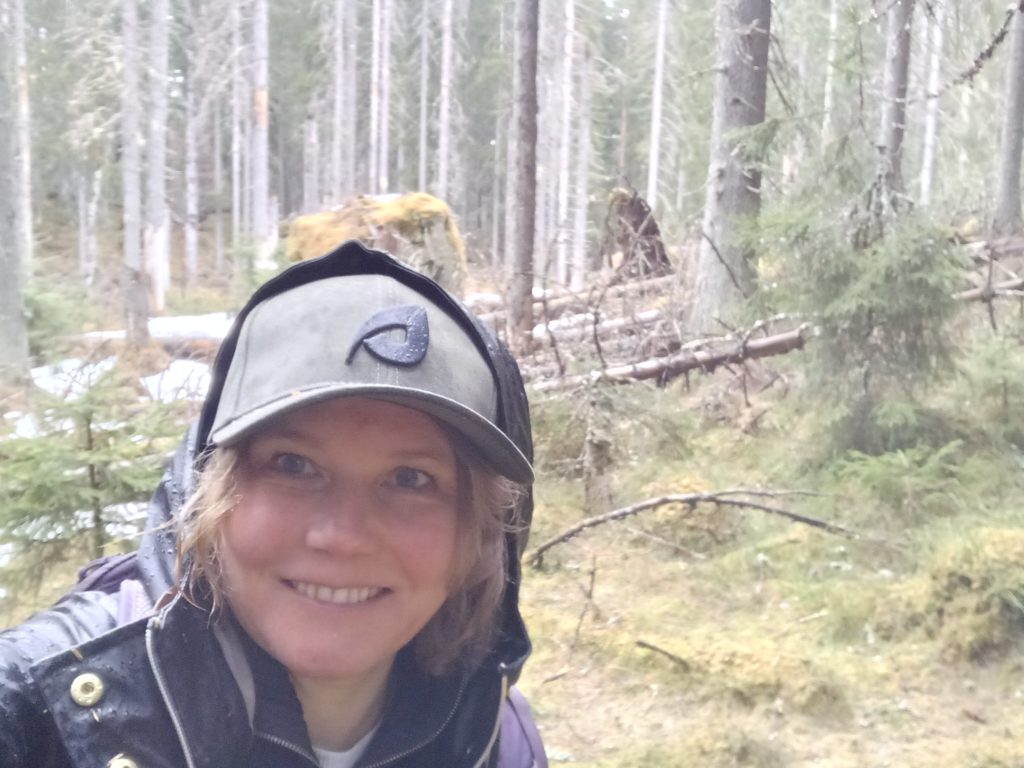This University of Helsinki Lahti Fund awarded grants for studies and research that support the development of the Lahti region and Päijät-Häme. Two grants of 4000 euros and three grants of 2000 euros were awarded to students and researchers at the University of Helsinki.
Grants of 4000 euros were awarded to doctoral researcher Hanna Rosti and university researcher, docent Maranda Vilén. Both work at the university’s Lahti facilities when they are not conducting field research.
Listening Woodpeckers
Hanna Rosti is a PhD researcher at the University of Helsinki’s Doctoral Programme in Wildlife Biology. Her research focuses on The Eurasian Three-toed Woodpecker (Picoides tridactylus) and more specifically on the sounds they emit. Is there individual variation? How does vocal activity change with time of day or season?
– The trend in research worldwide is that the studied individuals should be identified individually. This study aims to develop methods to identify individual differences in the vocalizations of birds. In this way, the methods developed in this study will hopefully be applicable to other species, the researcher explains.
The results may also provide further insights into the social behaviour of the Three-toed Woodpecker.
Three-toed Woodpecker is a rare species in southern Finland. Only suitable habitats for it are old forests, which are few and far between. Rosti is conducting her research in the Evo Hiking Area in Häme. 60 recorders have been placed in the area to listen to the birds during this spring and summer.

Hanna Rosti in Sudenpesänkangas, Evo.
Rosti hopes that her research will contribute to the conservation of old forests and the habitats they contain:
– I have been active in supporting the establishment of the Evo Science National Park. Evo is right next to Lahti and is already an important area for many people in Lahti. Greater protection of the Evo forests would save an extremely important complex of old forests to future generations and make a treasure trove for us scientists. I hope that this study will bring further attention to the old forests of Evo and that it will help to strengthen the prospects for the Evo Science National Park, she tells.
Rosti lives in Hollola. From there it is a short trip to the Niemi campus in Lahti, where she does most of her writing. Rosti says she has received a warm welcome and support from his colleagues there.
Her research is done in collaboration with Timo Pakkala a visiting researcher at the Lammi Biological Station, research coordinator John Loehr and National Land Survey of Finland.
Looking at Microplastics in Lake Vesijärvi with the help of Water Fleas
Maranda Vilén is a familiar figure in Niemenkatu, where she has been working a university researcher at the Ecosystems and Environment Research Programme for five years. Her current research focuses on the environmental risk of microplastics on aquatic ecosystems. The results could help to address the issue before it becomes more significant.
The research will be conducted in Lake Vesijärvi, where Vilén’s research group has already found microplastics of various types and sizes, likely originating from clothing, sports equipment, and sleds.
– Lake Vesijärvi is a prominent feature in Lahti, not only for recreation and aesthetics, but also environmental sustainability, she points out.

Fieldwork in Lake Vesijärvi.
The group will be assessing the impact of microplastics on water flea (Daphnia magna), a keystone organism that is essential to the lake’s ecosystem. The aim is to understand if the current levels of microplastics and their potential increase in the future could be toxic to daphnids.
Vilén explains that these filter feeders are primary consumers and that their consumption of microplastic particles could affect the food web’s stability and species diversity as particles move from energy producers such as plants to larger biota like fish through them. The study will also consider the potential impact of hazardous chemicals that could leach from plastic pollution over time.
Vilén considers Lahti her home and describes the facilities, equipment, and expertise that the University of Helsinki has in Lahti excellent. Smaller community has its advantages:
– The staff and students work together as a supportive community investigating environmental problems and how to find nature-based solutions. Collaborations and networking with other universities and companies are also facilitated due to the proximity within the Lahti Science Park and the support from the Lahti University Campus services.
University of Helsinki Lahti Fund Grants 2023
4000 euros: Hanna Rosti, Maranda Vilén
2000 euros: Ella Holopainen, Ella-Eevastiina Rintamäki ja Tua Valtonen
The University of Helsinki Funds
The University of Helsinki Funds includes over 300 funds founded by our alumni, friends and other supporters. All the disciplines have their own funds used to finance research projects, researchers and students of their own discipline. In addition to the discipline-specific funds, the university also has cause-specific and general funds. Funds have been donated to the University of Helsinki the past centuries.
The assets of the University of Helsinki Lahti Fund have been formed from donations made to the University of Helsinki Lahti Research and Training Center’s 20th anniversary fund and from the implementation of the University of Helsinki’s Lahti activities through various funds.


